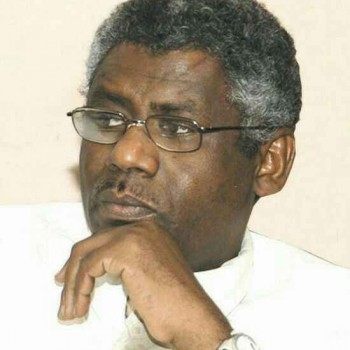Financial Inclusion: Why? How? And In Which Direction? (3)

As I See
Adil Al-Baz
1.
“Financial inclusion is the process through which all segments of society, especially the weak and marginalized, are empowered to access formal financial services (such as bank accounts, financing, insurance, savings, and electronic payments) at affordable prices and in a secure manner.”
2.
In the previous installment, I reviewed the paper presented by Dr. Khalid at the Port Sudan symposium. Today, we turn to the paper presented by Dr. Asjad Al-Kazim at the same event, titled “Unifying the Electronic Payment Platform: A Step Toward Digital Transformation and the Past to Come.” Dr. Asjad took a practical approach, shedding light at the beginning of her paper on the catastrophic effects of the war on the banking sector. She pointed out that 70 banks had closed their operational branches across the country, with 121 bank branches looted entirely—buildings destroyed, equipment stolen—and electronic payment services halted.
3.
Asjad focused in her paper on the importance of electronic banking services in a country like Sudan, stating that financial inclusion cannot be achieved without efficient and up-to-date electronic services. She affirmed that the potential for successful electronic payment services is broad, noting that the youth—who make up the majority of the population—are highly adept at using technology and increasingly dependent on it. She highlighted the possibility of securing both local and international support to develop the digital infrastructure necessary to enhance the country’s technological and digital systems. She cited examples such as World Bank programs supporting digital transformation in developing countries, along with European Union initiatives like Connecting Africa.
4.
In her paper, Dr. Asjad proposes a unified electronic payment platform, saying:
“A unified electronic payment platform is the key to a great economic transformation in Sudan, as it can contribute to enhancing financial inclusion, unifying banking efforts, facilitating financial transfers, and advancing digital transformation.”
She offers a practical model for this unified platform, naming it Saddad (SSD). Its goal is to enhance financial inclusion by providing services to all population segments, particularly in remote rural areas. She cited examples of similar platforms in Africa, such as those in Kenya and Egypt. The platform also aims to reduce dependence on cash in daily and official transactions, facilitate government revenue collection, improve economic performance efficiency, enable money transfers, bill payments, and integration with various sectors (transportation, education, e-commerce).
5.
The unified platform model proposed by Dr. Asjad can be used through smartphone applications, but its significant advantage is that it can also function via SMS for non-smartphones and without internet access, through USSD (Unstructured Supplementary Service Data).
Additionally, users can conduct transactions using QR codes (Quick Response codes), which are widely used in e-payment applications, financial inclusion, marketing, and easy access to websites or information.
6.
In the past two episodes, I attempted to summarize the two papers, both of which are worthy of discussion as they lay the foundation for a profound and important debate on digital transformation and financial inclusion. In the fourth part of this article, we will delve into both papers, offering insights, models, and experiences in digital transformation and financial inclusion, and what we should focus on. We will also take a closer look at the platform proposed by Dr. Asjad as a crucial and correct gateway to financial inclusion in Sudan.
To be continued…



